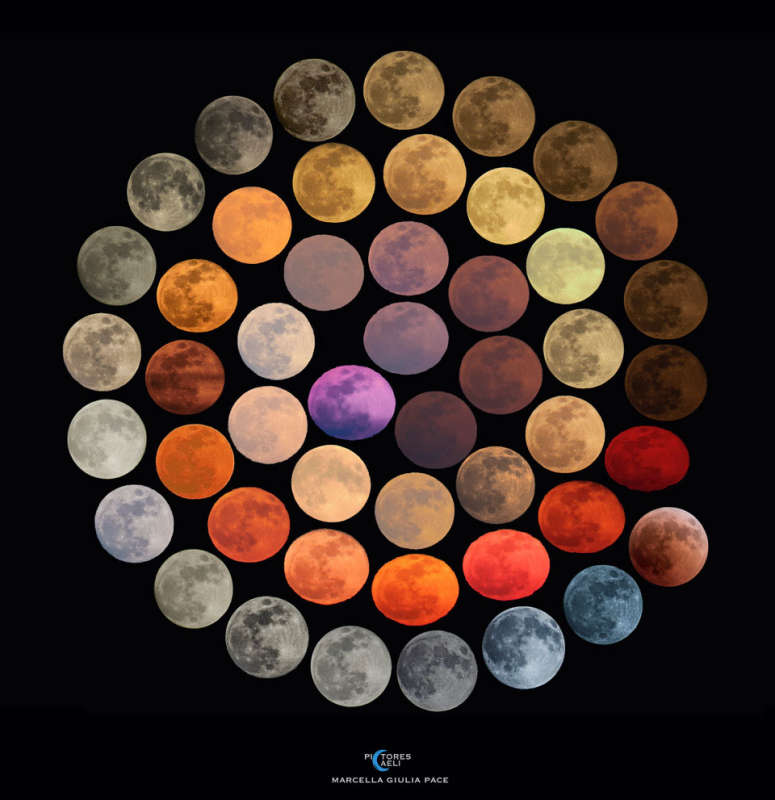
|
Credit & Copyright: Marcella Giulia Pace
Explanation:
What color is the Moon?
It depends on the night.
Outside of the Earth's atmosphere, the
dark Moon,
which shines by reflected sunlight, appears a
magnificently brown-tinged gray.
Viewed from inside the
Earth's atmosphere, though, the moon can appear quite different.
The featured image highlights a collection of apparent colors of the full moon documented
by one astrophotographer over 10 years from
different locations across
Italy.
A
red or yellow colored moon usually indicates a moon seen near the horizon.
There, some of the
blue light has been scattered
away
by a long path through the
Earth's atmosphere,
sometimes laden with fine dust.
A blue-colored
moon is more rare and
can indicate a moon seen through an atmosphere carrying larger dust particles.
What created the purple moon is
unclear
--
it may be a combination of several effects.
The last image captures the
total lunar eclipse of 2018 July --
where the moon,
in Earth's shadow, appeared a
faint red -- due to light
refracted through
air around the
Earth.
The next full moon will occur at the end of this month
(moon-th)
and is known in some cultures as the
Beaver Moon.
|
January February March April May June July August September October November December |
| |||||||||||||||||||||||||||||||||||||||||||||||||||||||
NASA Web Site Statements, Warnings, and Disclaimers
NASA Official: Jay Norris. Specific rights apply.
A service of: LHEA at NASA / GSFC
& Michigan Tech. U.
Based on Astronomy Picture
Of the Day
Publications with keywords: Moon
Publications with words: Moon
See also:
